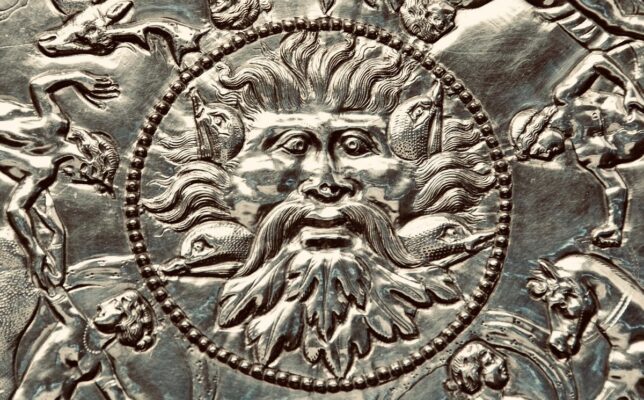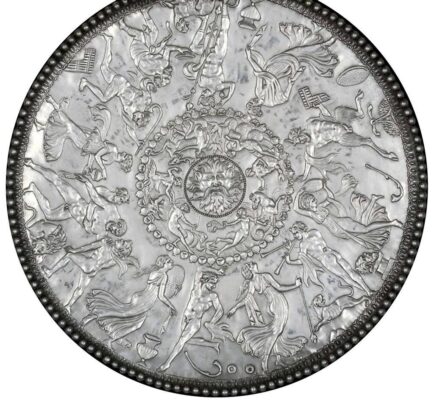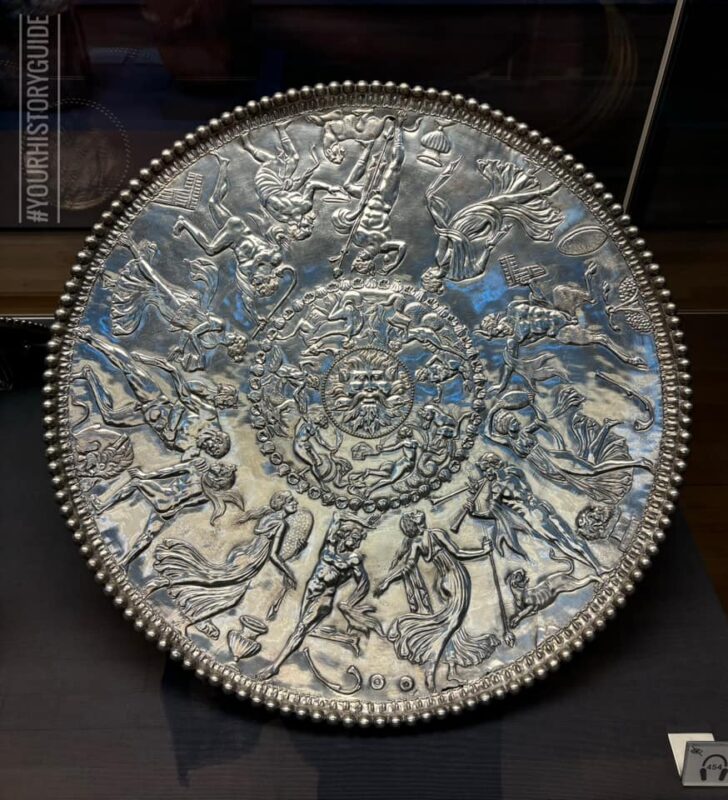
1. The Discovery of the Mildenhall Treasure
The story of the Mildenhall Treasure begins with an unexpected find in the English countryside.
1.1. How It Was Found
In 1942, Gordon Butcher, a ploughman working in Suffolk, stumbled upon silver items buried in a field. Initially unaware of their significance, he took them home and even used some pieces for special occasions.
1.2. The Role of Sydney Ford
Recent research revealed that Gordon’s employer, Sydney Ford, played a significant role in withholding the find. Ford delayed reporting the treasure’s existence, leading to its true importance being recognized only in 1946.
1.3. Recognition as the Mildenhall Treasure
When the collection’s historical and artistic value became clear, it was named the Mildenhall Treasure and is now considered a cornerstone of late Roman silverwork.

2. The Great Dish: The Collection’s Centerpiece
The Great Dish, or “The Oceanus Dish”, stands out as the most spectacular piece in the Mildenhall Treasure.
2.1. Size and Craftsmanship
Measuring an impressive 60.5 cm in diameter and weighing 8,256 grams, the dish is a masterpiece of Roman silver craftsmanship. Its decoration features low-relief engravings and meticulous detailing.
2.2. Mythological Themes
The design alludes to the worship of Bacchus, the Roman god of wine and festivity. At its center is Oceanus, the personification of the sea, with seaweed forming his beard and dolphins adorning his hair.
2.3. Intricate Details
The inner circle is bordered by scallop shells and depicts sea nymphs riding mythical marine creatures, including a seahorse, a triton, a sea-stag, and a ketos—a dragon-like sea monster. The outer frieze features Bacchus surrounded by revelers, highlighting themes of celebration and abundance.

3. Historical Significance of the Mildenhall Treasure
Beyond its artistic beauty, the treasure provides key insights into Roman life and beliefs.
3.1. Roman Influence in Britain
The Mildenhall Treasure demonstrates the influence of Roman culture in Britain during the 4th century AD, showcasing their artistry, mythology, and luxury.
3.2. Preservation of History
As one of the finest surviving examples of late Roman silverwork, the treasure has been meticulously preserved and is now displayed in the British Museum, inspiring scholars and art enthusiasts alike.
3.3. Impact on Archaeology
This discovery emphasized the need for reporting and preserving artifacts, paving the way for stricter archaeological laws and greater public awareness.
See more: The Palermo Stone: A Vital Record of Egypt’s Old Kingdom
Conclusion
The Mildenhall Treasure is a testament to the skill and creativity of Roman artisans. From its accidental discovery in a Suffolk field to its recognition as a cultural masterpiece, the treasure continues to captivate and educate people about the splendor of Roman history. If you ever visit the British Museum, don’t miss the chance to witness this extraordinary collection firsthand.


CÁC TIN KHÁC
Mark Twain & Olivia Langdon: A 36-Year Love Story Filled with Laughter and Devotion
The Tollund Man: A 2,400-Year-Old Mystery Preserved in a Danish Bog
Skara Brae: Scotland’s Hidden Neolithic Village
Porta Nigra: The Hidden Depths of Trier’s Iconic Roman Gate